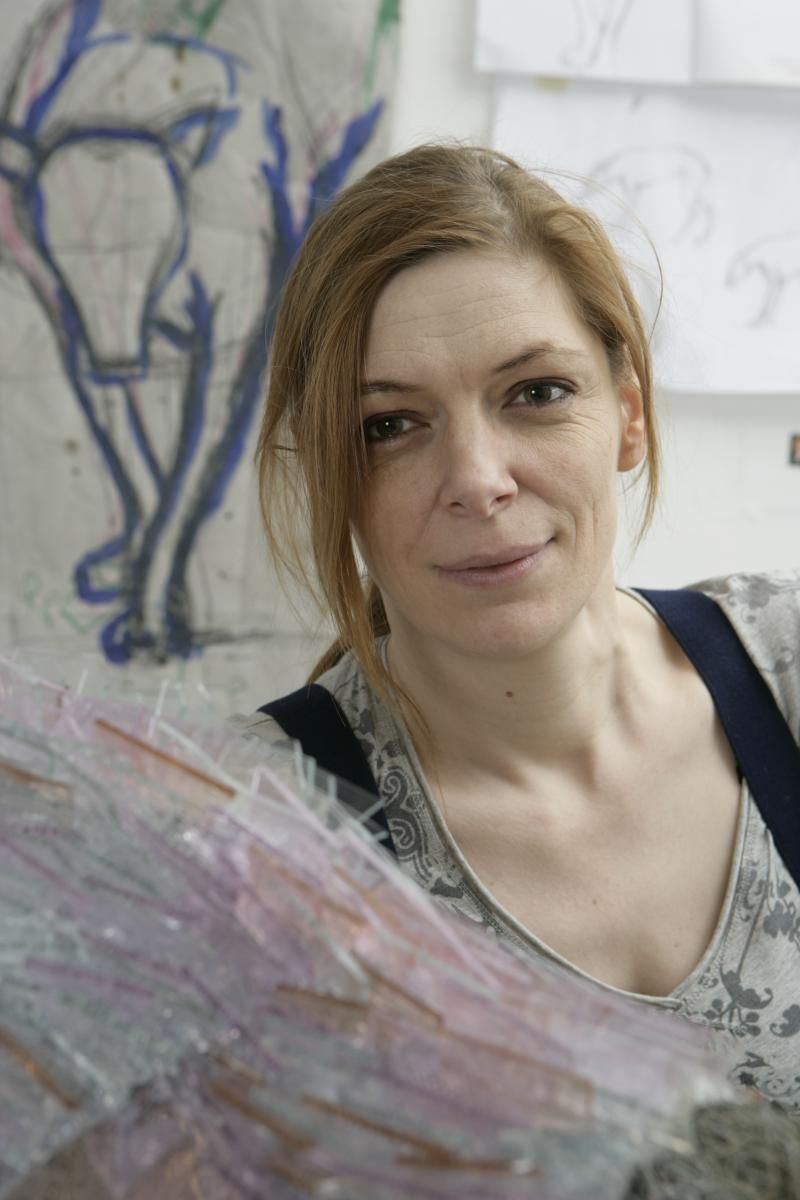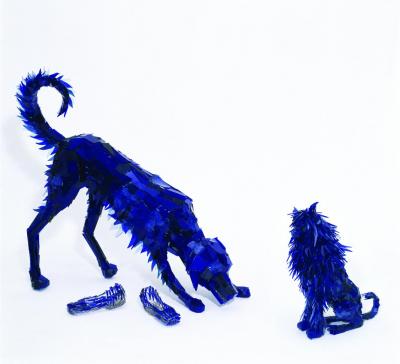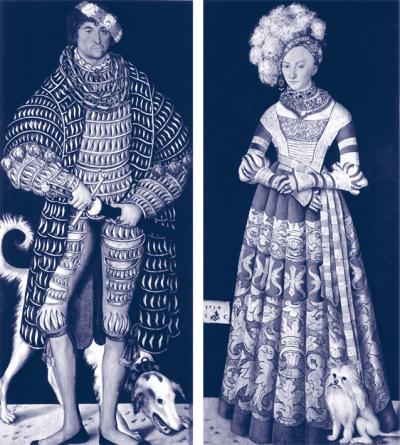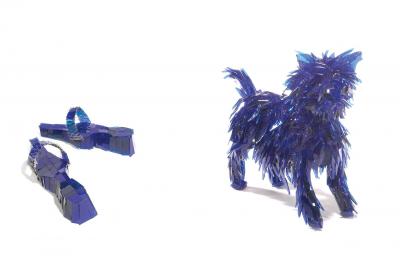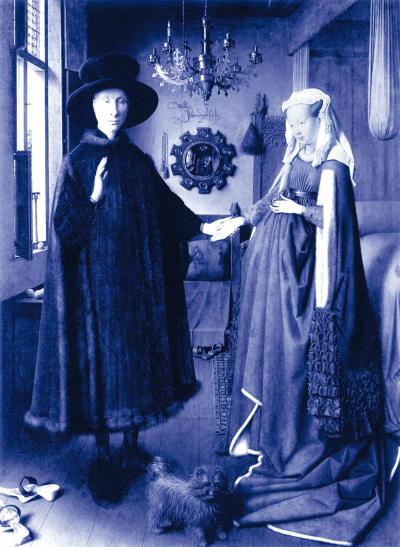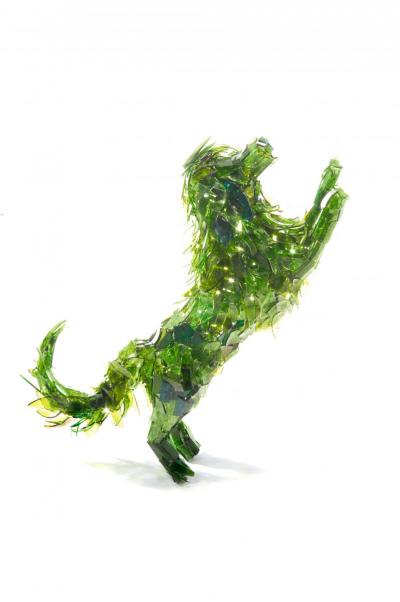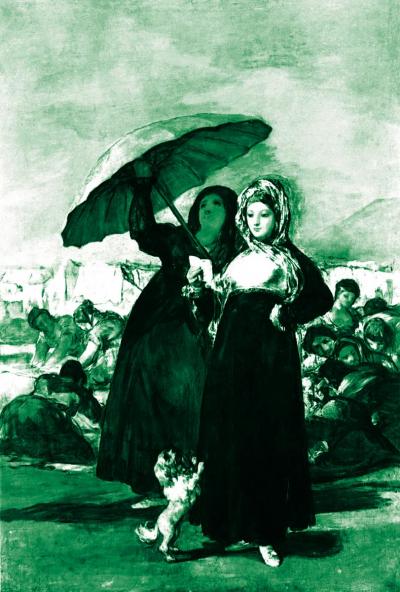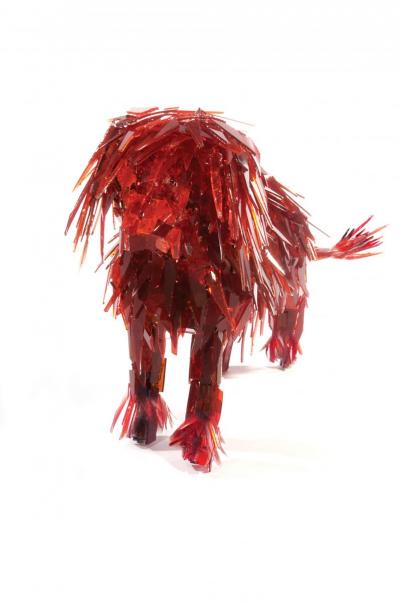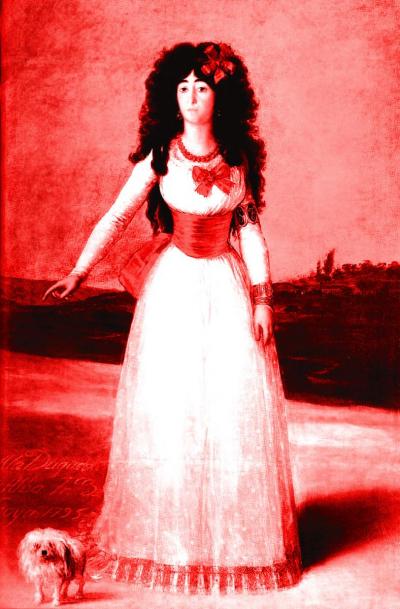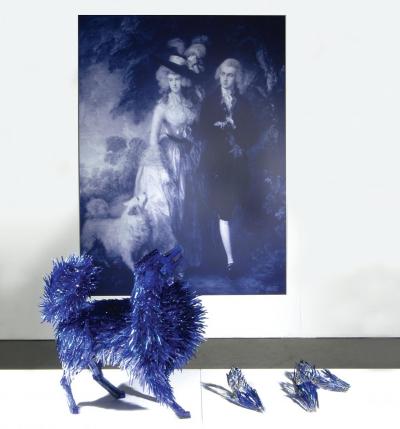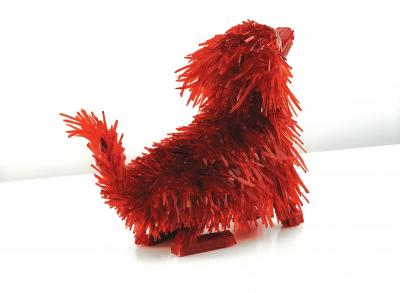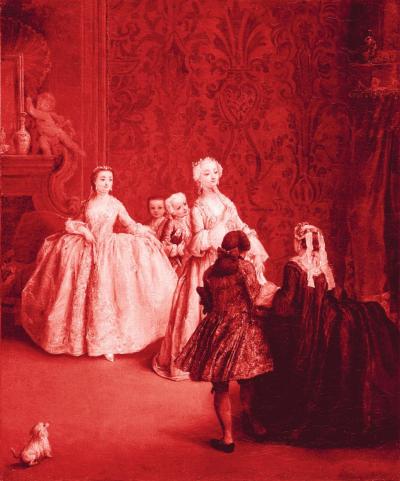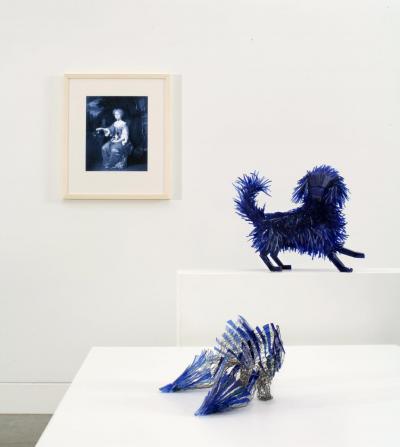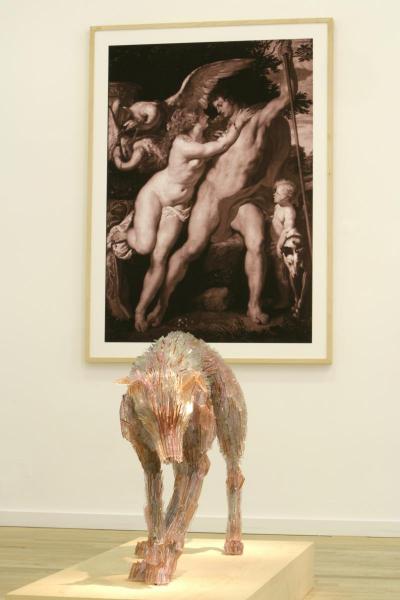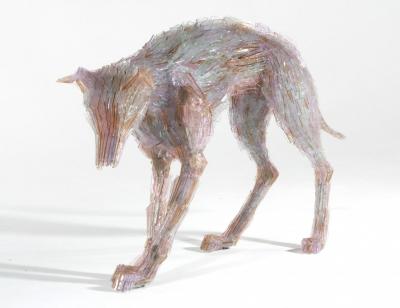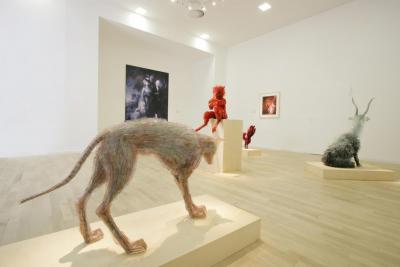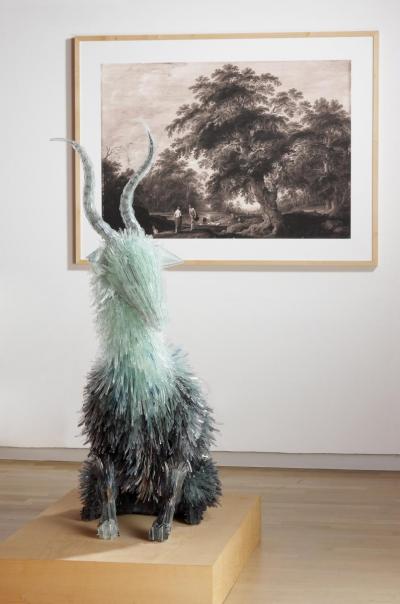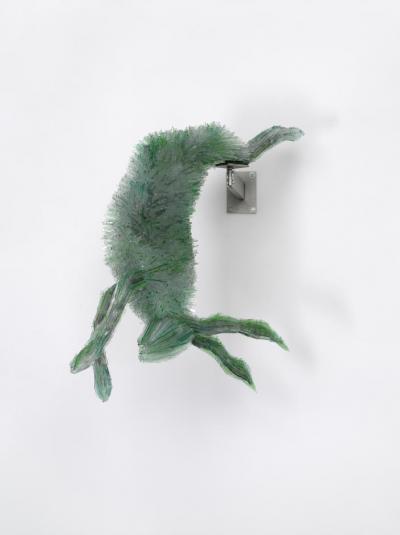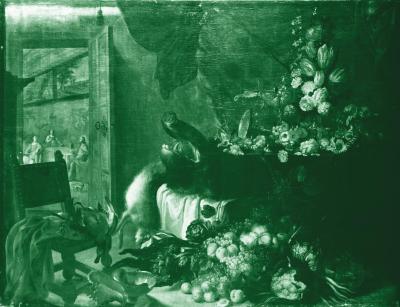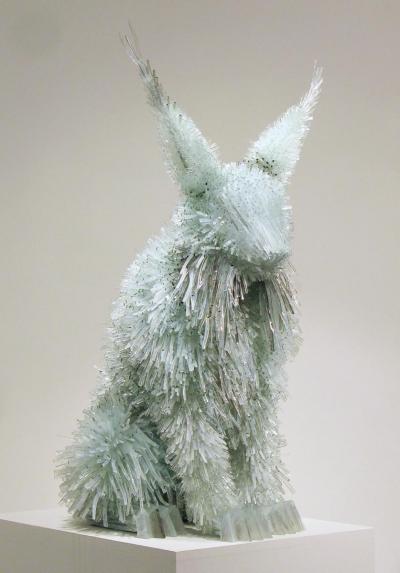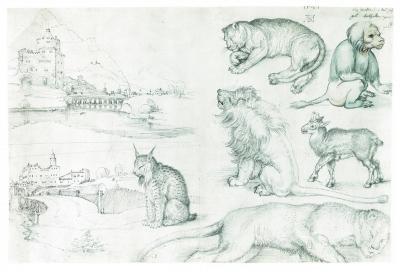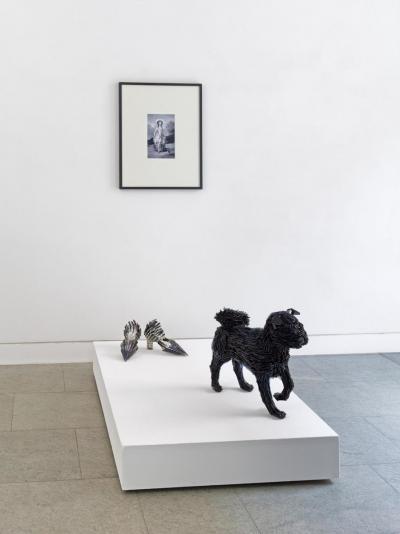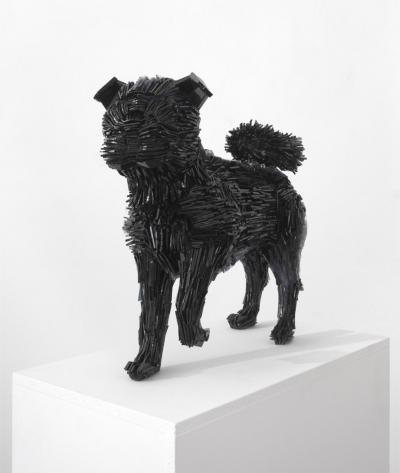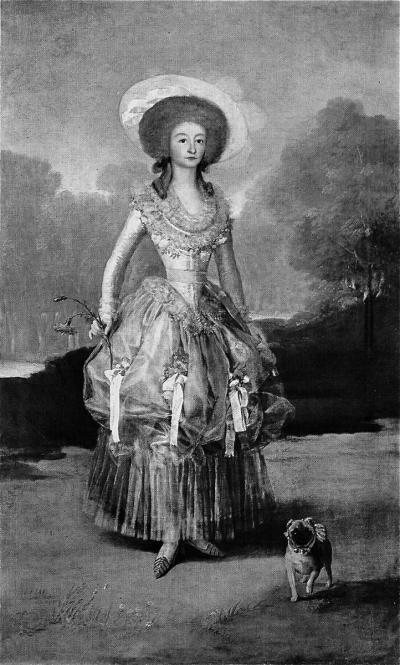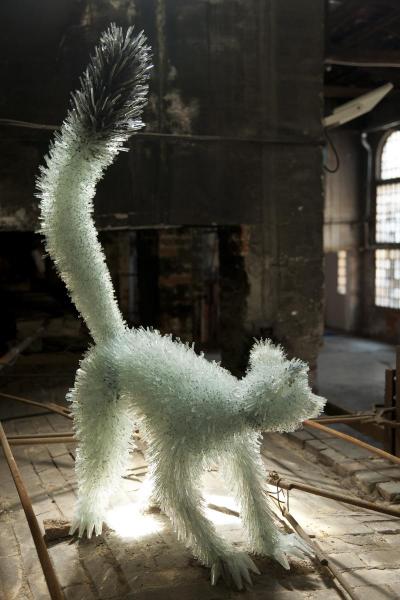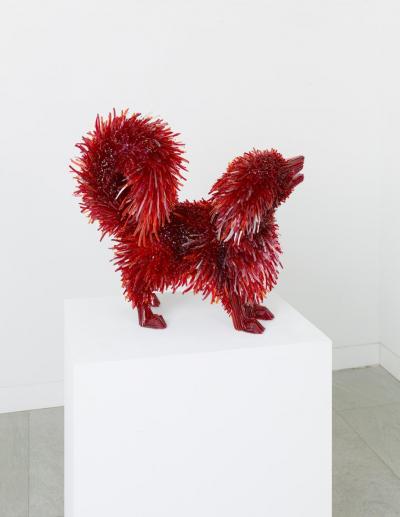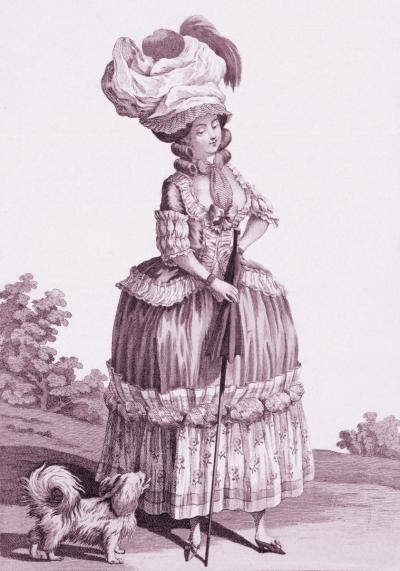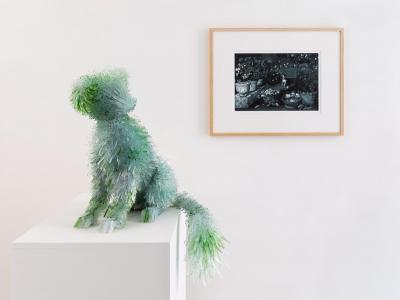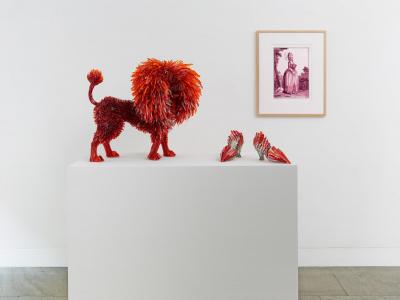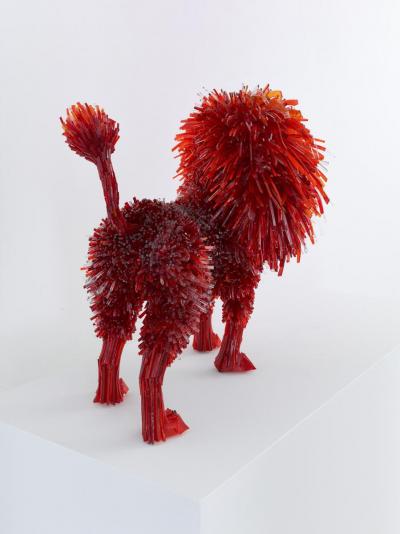Marta Klonowska - "My glass animals open a new reality."
Mediathek Sorted

Sculptures of animals have not enjoyed much popularity in contemporary art since 1945; at least not amongst the avant-garde. Not a single example of a classical, naturalist or abstract animal sculpture is listed in the standard publications on 20th-century art in the period following the Second World War. People have had more than enough of 19th century animal sculptors like August Gaul (1869-1921), Richard Scheibe (1879-1964), Ewald Mataré (1887-1965), Renée Sintenis (1888-1965), Gerhard Marcks (1889-1981) and Emy Roeder (1890-1971), all of whose works were amongst the high points of modern art between 1900 and the 1930s. People were also fed up with “conservative-style sculptures of animals” – they had also, of course, existed in the second half of the twentieth century - because, until the end of the 1980s they had been placed all over the country in new housing blocks and parks as supposedly apolitical decorative works to “raise people’s spirits” (Katrin Etringer).
Animal sculptures only began to gain in significance for the avant-garde with the arrival of contemporary art genres like object art, performance, installation, environment and concept art. However what mostly inspired contemporary artists were not the animals themselves but the symbols and myths that surrounded them. Joseph Beuys’ works are shot through with manifestations of animals in objects, actions and environments. His wax sculpture “The Queen Bee” (1952) was his first formulation of sculpture as a process somewhere between organic life, crystalline structures, liquefaction and solidification. Beuys himself declared that his legendary action how to explain pictures to a dead hare (1965) “conveys a sense of the secrecy of the world and of existence […] even a dead animal preserves more powers of intuition than some human beings with their stubborn rationality.” In his environmental work Hirschdenkmäler (The Stag Monuments) first exhibited in 1982 in the Berlin Gropius-Bau, clay Urtiere (primaeval animals), goats and a stag in the form of powerfully abstract assemblages of wood and everyday articles embody primitive powers and myths. “A stag appears in times of necessity and danger. It is the expression of a special element: the warm positive element of life” In one of his last actions Beuys himself imitated a Coyote (1984) and, according to Nam June Paik, thereby captured the atmosphere of the central Asian steppes. Nancy Graves interpreted her life-size reconstructions of an ice age Dromedary (1968/69) made of skin, canvas, wax and oil paints on a frame of wood and steel as an “abstract sculpture”, i.e. the embodiment of an idea. Bruce Nauman culminated years of work on bodies and spaces in a presentation of piled up, tied together, seemingly cloned, mutilated wild animals made of rigid foam and hanging on a framework of wood, iron and wire (Animal Pyramid, 1989). Damien Hirst made a name for himself at the start of the 1990s with formaldehyde stuffed fish and vertebrate animals that he placed in glass cases as provocative metaphors of aggression and vitality, art and conservation, life and death, or sickness and science.
Marta Klonowska works in an area between classical and contemporary art genres. Her glass animals are classical, naturalistic sculptures in their poses, movement, expression and the distant impact of their “coats”, insofar as they translate the role models from famous paintings in museums like the Double Portrait of Henry the Pious and His Wife by Lucas Cranach the Elder (1514, Kunstsammlungen Dresden, Ill:. 1a, b) or Jan van Eyck’s The Arnolfini Wedding (1434, National Gallery London, Ill:. 2a, b) into a third dimension. But there also exist translations of animal studies by Albrecht Dürer (Ill:. 11a, b) or directly from nature like Klonowska’s Maki (2011) (Ill:. 13). Here the artist has an equally sensitive feel for nature as do sculptors working in stone or bronze. But she is also near to contemporary object and installation art. She models her animal sculptures over a framework of metal rods and nets, wire mesh and metal foil, to which she adds precisely cut coloured glass and silicone rods to make ruffled “coats”, paws, noses, ears and tails – and in the case of the Goat (2008, Ill:. 9), horns. The colours of the glass rods and the animals that they create are in no way naturalistic: cobalt blue, emerald green, black or ruby red. Along with reproductions of the paintings that are printed in the same colours, and the shoes of the portrayed people that are also made of glass, all the elements constitute walkabout installations, in other words, environments.
With the help of the rigid, unwieldy glass rods, Klonowska masterfully succeeds in recreating the smooth and equally fluffy, puffed up or bushy structures of the animal’s coats. The closer we move to the objects, the more obvious becomes the distant aloofness and dangerous quality, the rigidity, transparency and coldness of the material. It quickly becomes clear that Klonowska’s primary concern belongs to contemporary conceptual art, and not to the realistic portrayals in classical animal sculptures. For her it is all about the ambivalence between people’s appropriation of animals and the latter’s individuality: i.e. between what people make of them and their individual autonomous being.
Klonowska has precisely discovered this contradiction in paintings executed by Old Masters. Here dogs are not independent creatures but symbolise the attributes of the persons in the portrait. In van Eyck’s Arnolfini Wedding (Ill:. 2b) the dog at the feet of the freshly wed couple symbolises married fidelity. Male portraits like that of Henry the Pious of Saxony (Ill:. 1b) are mostly given hunting dogs. In the mythological scene painted by Peter Paul Rubens around 1610 (Museum Kunstpalast, Düsseldorf, Ill:. 8a), Adonis is also assisted by a hunting dog, whereas Venus is trying to prevent her lover from departing for the hunt. Aristocratic ladies like Goya’s Duchess of Alba (1795, Fundación Casa de Alba, Madrid, Ill:. 4b), Jan Verkoljes unknown Lady, holding a spaniel in her lap (ca. 1680, private collection, London, Ill:. 7), and Goya’s Marquesa de Pontejos (1786, National Gallery Washington, Ill:. 12c) are given lapdogs in order to emphasise the feminine element and symbolise sweetness, fidelity and aristocratic luxury. Animals contribute to the overall mood in landscape paintings like those of Alexander Keirincx and Cornelis van Poelenburgh, in which a scarcely visible, uninvolved goat is sitting in a mythological scene featuring Apollo and the Cumaean Sibylle in the foreground (ca.1630, Museum Kunstpalast, Düsseldorf, Ill:. 9).
Klonowska recognises the staging in these images and reverses it. She liberates the animals from their existence as bit players and gives them the main role as precious, luminous, colourful beings that can no longer be perceived as glass animals, dangerous, remote and cold. Human beings, who are only represented by their shoes, now take on secondary roles. The artist comments on this in the following manner: “I create installations, which should lead the audience into a new universe. My animal figures are part of historical paintings, where they play a secondary role to the sitters. In my art the animals perform as the principal actor. Animals are difficult to understand and it is difficult to communicate with them. My glass animals open therefore a new reality, which is different from ours. The sitters in the painting, the animals and the audience of my art perform in a kind of theatrical stage, where the different levels become indistinct. This clash of realities should make us think about the uncertainties of life.”
Last not least the artist hides the “insecure nature of the world” in wit and irony. “Dogwalk” is the title of one of her exhibitions, despite the fact that her animal figures will never go anywhere for a walk, but stare rigidly and silently in Thomas Gainsborough’s corresponding painting, which shows an elegantly dressed aristocratic couple taking their dog for a morning walk. (1785, National Gallery London, Ill:. 5). “Petting Zoo” is the title of another exhibition, irrespective of the fact that visitors would cut their own bodies if they tried to put this into practice. In her installations and exhibitions Klonowska creates her own universe of historical and contemporary art and takes visitors into a world in which the role of animals can be observed in a more respectful manner.
Axel Feuß, December 2015
We should like to express our gratitude to the Galerie lorch+seidel contemporary, Berlin, for their cordial support.
http://www.lorch-seidel.de/artists/marta-klonowska
Further reading:
David Revere McFadden, Museum of Arts & Design New York: Marta Klonowska, in: The Urban Glass Art Quarterly, Summer edition, New York 2006
Marta Klonowska. Streichelzoo, exhibition catalogue, Museum Kunstpalast, Düsseldorf 2008
Marta Klonowska. Dogwalk, work catalogue, Düsseldorf 2008
Marta Klonowska. Lion Dog meets Garden Dog. Exhibition catalogue, lorch+seidel contemporary, Berlin 2015
Marta Klonowska in public collections:
Herbert Gerisch Stiftung, Neumünster
Alexander Tutsek-Stiftung, Munich
The Corning Museum of Glass, Corning, NY
Kunstsammlungen der Veste Coburg / European Museum of Modern Glass, Coburg
Museum Kunstpalast / Glas-Museum Hentrich, Düsseldorf
Ernsting-Stiftung / Glasmuseum, Coesfeld
Musée-Atelier du Verre, Sars-Poteries
Solo exhibitions by Marta Klonowska
2015 Lion Dog Meets Garden Dog, lorch+seidel contemporary, Berlin
2014 Marta Klonowska, Venice Projects, Venedig
2013 Puszek and Friends, lorch+seidel contemporary, Berlin
2009 Geschöpfe (with Sibylle von Preußen), lorch+seidel contemporary, Berlin
2009 Domestic Animals, The Finnish Glass Museum, Riihimäki
2008 Streichelzoo, Museum Kunstpalast, Düsseldorf
2005 Portraits und Tierskizzen, lorch+seidel contemporary, Berlin
2003 Dogwalk, lorch+seidel contemporary, Berlin
2002 Åkerby Sculpture Park, Nora
1997 Galerie Cité Internationale des Arts de Paris
1996 Trophäen, Galerie Laden 33, Mühlheim am Main

















































































